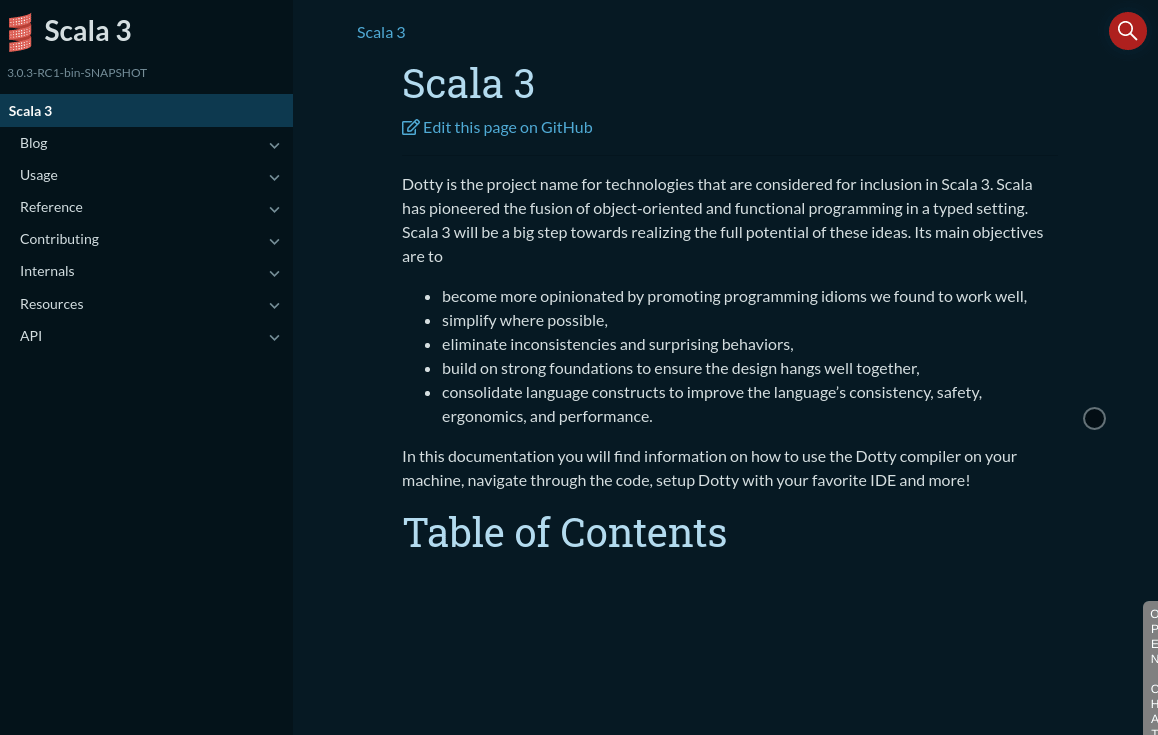This doc page is specific to Scala 3, and may cover new concepts not available in Scala 2. Unless otherwise stated, all the code examples in this page assume you are using Scala 3.
Searching for functions by their symbolic names can be time-consuming. That is why the new scaladoc allows searching for methods and fields by their types.
Consider the following extension method definition:
extension [T](arr: IArray[T]) def span(p: T => Boolean): (IArray[T], IArray[T]) = ...
Instead of searching for span we can also search for IArray[A] => (A => Boolean) => (IArray[A], IArray[A]).
To use this feature, type the signature of the member you are looking for in the scaladoc searchbar. This is how it works:

This feature is provided by the Inkuire search engine, which works for Scala 3 and Kotlin. To be up-to-date with the development of this feature, follow the Inkuire repository.
Examples of queries
Some examples of queries with intended results:
List[Int] => (Int => Long) => List[Long]->mapSeq[A] => (A => B) => Seq[B]->map(A, B) => A->_1Set[Long] => Long => Boolean->containsInt => Long => Int->constString => Int => Char->apply(Int & Float) => (String | Double)->toDouble,toStringF[A] => Int->length
Query syntax
In order for a scaladoc searchbar query to be searched using Inkuire instead of the default search engine, the query has to contain the => character sequence.
Accepted input is similar to a curried function signature in Scala 3. With some differences:
- AndTypes, OrTypes and Functions have to be enclosed in parentheses e.g.
(Int & Any) => String - fields and parameterless methods can be found by preceding their type with
=>, e.g.,=> Int - A wildcard
_can be used to indicate that we want to match any type in a given place e.g.Long => Double => _ - Types in the form of single letter e.g.
Aor a letter with a digitX1are automatically assumed to be type variables - Other type variables can be declared just like in polymorphic functions e.g.
[AVariable, AlsoAVariable] => AVariable => AlsoAVariable => AVariable
Working with type aliases and method receivers
When it comes to how the code is mapped to InkuireDb entries, there are some transformations to make the engine more opinionated (though open to suggestions and changes). Firstly, the receiver (non-module owner) of a function can be treated as a first argument. Automatic currying is also applied, so that the results don’t depend on argument lists. When finding matches, vals and defs are not distinguished.
So the following declarations should be found by query Num => Int => Int => Int:
class Num():
def a(i: Int, j: Int): Int
def b(i: Int)(j: Int): Int
def c(i: Int): (Int => Int)
val d: Int => Int => Int
val e: Int => Int => Int
val f: (Int, Int) => Int
end Num
def g(i: Num, j: Int, k: Int): Int
extension (i: Num) def h(j: Int, k: Int): Int
def i(i: Num, j: Int)(k: Int): Int
extension (i: Num) def j(j: Int)(k: Int): Int
...
When it comes to type aliases, they are desugared on both the declaration and the query signature. This means that for declarations:
type Name = String
def fromName(name: Name): String
def fromString(str: String): Name
both methods, fromName and fromString, should be found for queries Name => Name, String => String, Name => String and String => Name.
How it works
Inkuire works as a JavaScript worker in the browser thanks to the power of ScalaJS.
To enable Inkuire when running scaladoc, add the flag -Ygenerate-inkuire. By adding this flag two files are generated:
inkuire-db.json- this is the file containing all the searchable declarations from the currently documented project in a format readable to the Inkuire search engine.inkuire-config.json- this file contains the locations of the database files that should be searchable from the documentation of the current project. By default, it will be generated with the location of the local db file as well as the default implied locations of database files in External mappings.